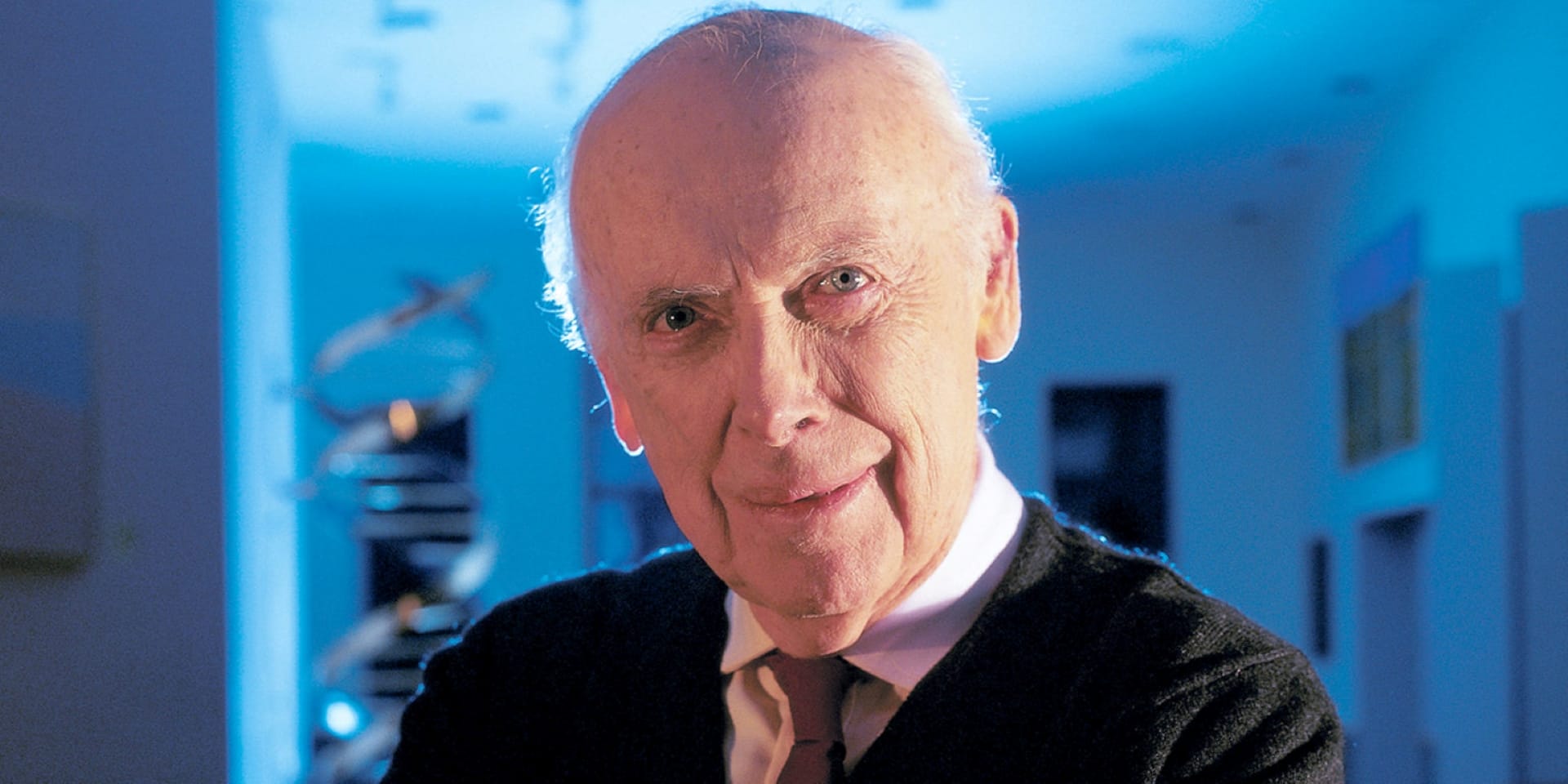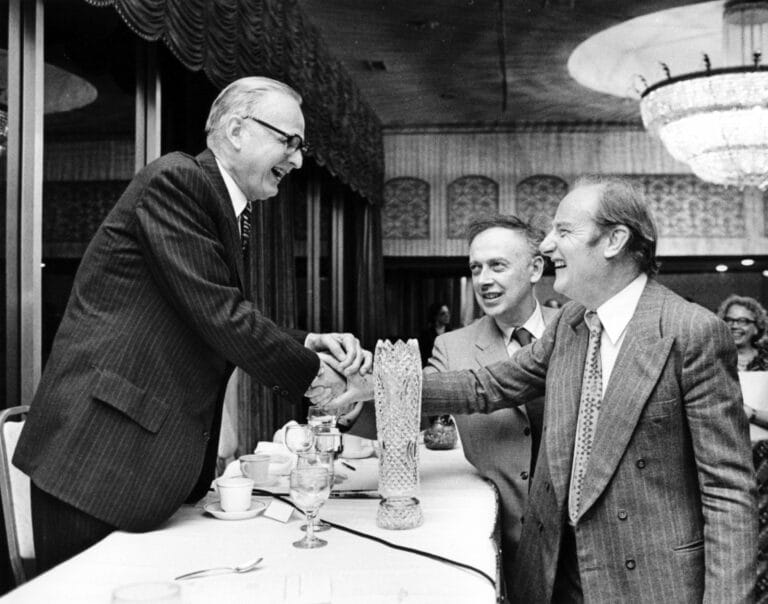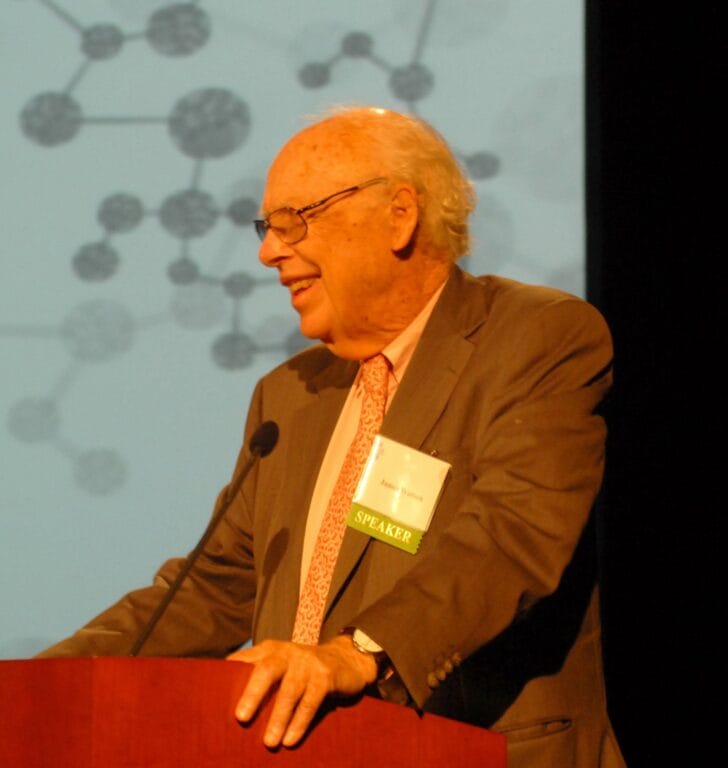Giants in genomics: James Watson

James Watson was the co-discoverer of the double helix structure of DNA. For this fundamental finding Francis, James Watson and Maurice Wilkins were awarded the Nobel Prize for Physiology or Medicine in 1962.
Key terms
DNA
(deoxyribonucleic acid) A molecule that carries the genetic information necessary to build and maintain an organism.
RNA
(ribonucleic acid) A single-stranded molecule that acts as an information messenger or occasional information storage.
Gene
A section of DNA within a genome that carries a specific set of information - often the information needed to make a protein.
Early life
James Watson was born in Chicago, US, in 1928 and from a very early age showed great academic ability and a keen interest in bird watching. At 12 years old he was one of US radio’s high-IQ Quiz Kids and by age 15 he had won a scholarship to study at the University of Chicago under the gifted youngster programme. By 1950, aged 22, he had completed a Bachelor of Science degree and a PhD in zoology.
James first began to investigate the structure of DNA and the secrets that our genes hold at the University of Copenhagen. On a visit to the Zoological Station in Naples, Italy, in 1951, he met Maurice Wilkins and was introduced to a technique called X-ray crystallography, which can be used to visualise the structures of molecules.
Later that year, he moved his research to the Cavendish Laboratory in Cambridge, UK. It was here that James first met the British biophysicist Francis Crick, then a PhD student, who shared his aims to figure out the structure of DNA. Soon after meeting, they decided to join forces.
Solving the structure of DNA
James and Francis’ put forward their hypothesis that DNA had a double helix structure in 1953, publishing their findings in the journal Nature. Their model also highlighted how the DNA molecule is able to copy itself. They answered a number of fundamental genetics questions and to this day the discovery is considered one of the great scientific advances of all time.

James’ book The Double Helix provides a memoir of the years leading up to the discovery and it has had a considerable and positive effect on the way the public perceive scientists. However, the discovery was not without controversy.
At the same time that James and Francis were carrying out their research to discover the structure of DNA, Rosalind Franklin was also using X-ray crystallography in the hope of making the same breakthrough. She and her PhD student, Raymond Gosling, produced an X-ray image of DNA that allowed them to draw conclusions about the double helix shape of DNA. Her data went unpublished but was shown to James and Francis, without her knowledge, by Maurice Wilkins.
Rosalind’s data provided evidence that was fundamental to Francis and James’ discovery – but they barely acknowledged her contribution when it came to publishing the results. Tragically, Rosalind died before she could get any of the recognition she deserved.

In 1953, James Watson and Francis Crick put forward their hypothesis that DNA had a double helix structure.
Beyond the double helix
In 1955, James moved back to the US to teach biology and conduct research at Harvard University. He took over the leadership of Cold Spring Harbor Laboratory in 1968, serving as director for 36 years and developing the laboratory into one of the world’s premier research facilities in cancer, neurobiology and molecular genetics.

James was also heavily involved in one of the largest biology projects ever attempted, the Human Genome Project. From 1988 to 1992, he led the Human Genome Project at the US National Institutes of Health (NIH). He was forced to resign from this position, however, after differences in opinion with the National Institutes of Health director on the topic of patenting genetic material. Francis Collins took over in his place.
James remained involved in the Human Genome Project up to its completion in 2003. He later became the second person ever to have his genome sequenced in an on-going effort to encourage early detection and prevention of diseases.
From the late 2000s to the 2010s, several institutions began to sever ties with James, and he was stripped of several honorary titles, recognising his long history of provocation with racist, sexist, anti-Semitic and homophobic remarks.